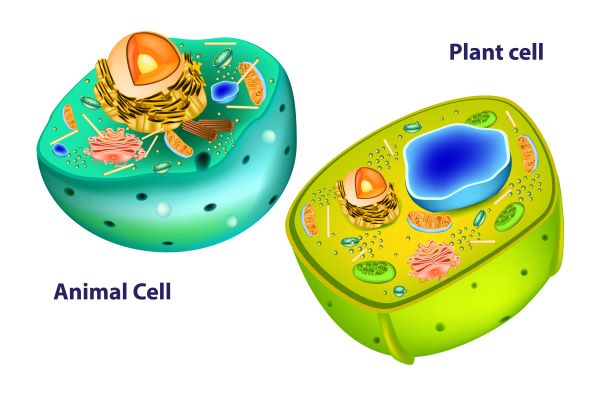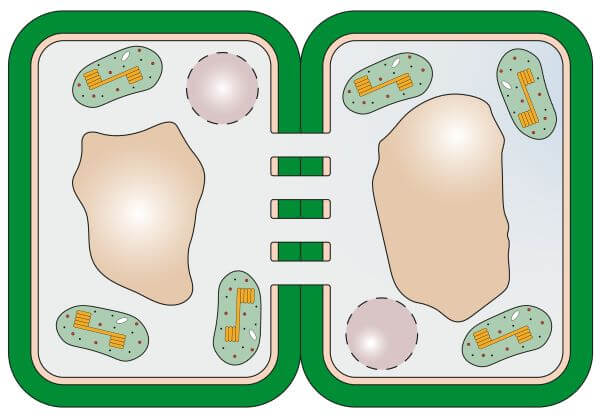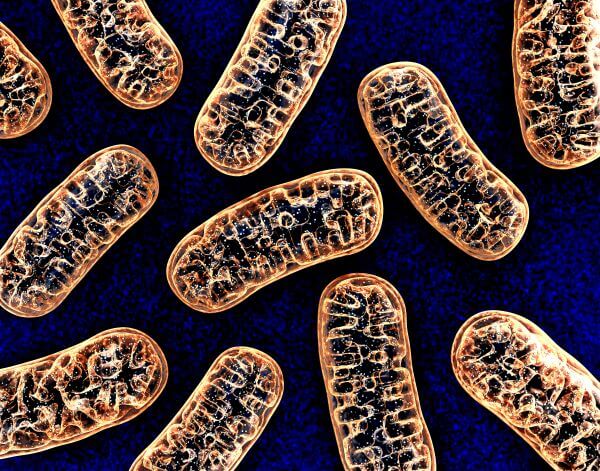Cells are the fundamental units that make up all living things, including plants and animals. All plant and animal cells are eukaryotic, so they have several cellular processes and organelles in common. However, there are also key differences between plant and animal cells in terms of their size, their shape, and the cell structures they contain.

Plant Cells |
Animal Cells |
| Contain chloroplasts | Do not contain chloroplasts |
| Cell wall | No cell wall |
| Contain one large vacuole | May contain several small vacuoles |
| 10 – 30 µm | 10 – 100 µm |
| Round, irregular shape | Rectangular or box-like shape |
Plant vs. Animal Cell Size
Plant cells are often larger than animal cells. Whereas the size normal range for an animal cell is between 10 and 30 micrometers (µm), plant cells can measure anywhere between 10 and 100 µm.
Plant vs. Animal Cell Shape
Animal cells tend to be round with an irregular shape. This is different from plant cells, which have a fixed rectangular or box-like shape.

Energy Storage in Plant vs. Animal Cells
Both plant and animal cells store energy, but they use different molecules to do so. Animal cells store energy in the form of glycogen molecules, whereas plant cells store their energy in starch.
Plant vs. Animal Cell Structures
Plant and animal cells contain many of the same organelles, but some structures are only found in plant cells. Others are found in both plant and animal cells, but their functions are slightly different.
Cell Wall
Plant cells are surrounded by a tough, cellulose-based structure called the cell wall. The cell wall is found outside of the cell membrane of plant cells but is absent from animal cells.
Chloroplasts
Chloroplasts are the site of photosynthesis, which uses energy from the sun to convert carbon dioxide and water into glucose. This is how plants obtain food, so chloroplasts are a common feature of plant cells. Chloroplasts are never found in animal cells, however, as animals obtain their nutrition by eating rather than by photosynthesis.

Lysosomes
Lysosomes are small, spherical organelles full of digestive enzymes that are used to break down and recycle unwanted materials. Lysosomes are also used to destroy invading pathogens. They are common in animal cells, but rare in plant cells as the tough, plant cell wall helps to keep unwanted invaders out.
Vacuoles
Both plant and animal cells contain vacuoles, but their structure is very different. An animal cell may contain several small vacuoles, which are usually used to store waste products. In contrast, the plant cell vacuole is very large and may occupy up to 90% of the volume of the cell. It is used to store a variety of substances (including water, sugars, proteins, salts, etc.), and helps to maintain the turgor pressure of the cell.
Plasmodesmata
Plasmodesmata are small channels or pores between plant cells that directly connect one cell to another. Plant cells can use the plasmodesmata to exchange molecules with one another. Plasmodesmata are only found in plant and algal cells; the animal cell equivalent is called the gap junction.

Similarities Between Plant and Animal Cells
Both Are Eukaryotic
Plant and animal cells are both types of eukaryotic cells, meaning they both contain a true nucleus as well as other membrane-bound organelles.
Both Respire
All cells need energy to grow and function, and animal and plant cells both obtain this energy from cellular respiration. This metabolic process takes place in the mitochondria of plant and animal cells and involves the breakdown of glucose to release energy.

Organelles Found in Both Plant and Animal Cells
Plant and animal cells contain many of the same cellular structures, including the nucleus, mitochondria, ribosomes, endoplasmic reticulum, Golgi apparatus, peroxisomes, cytoplasm, and cell membrane.
